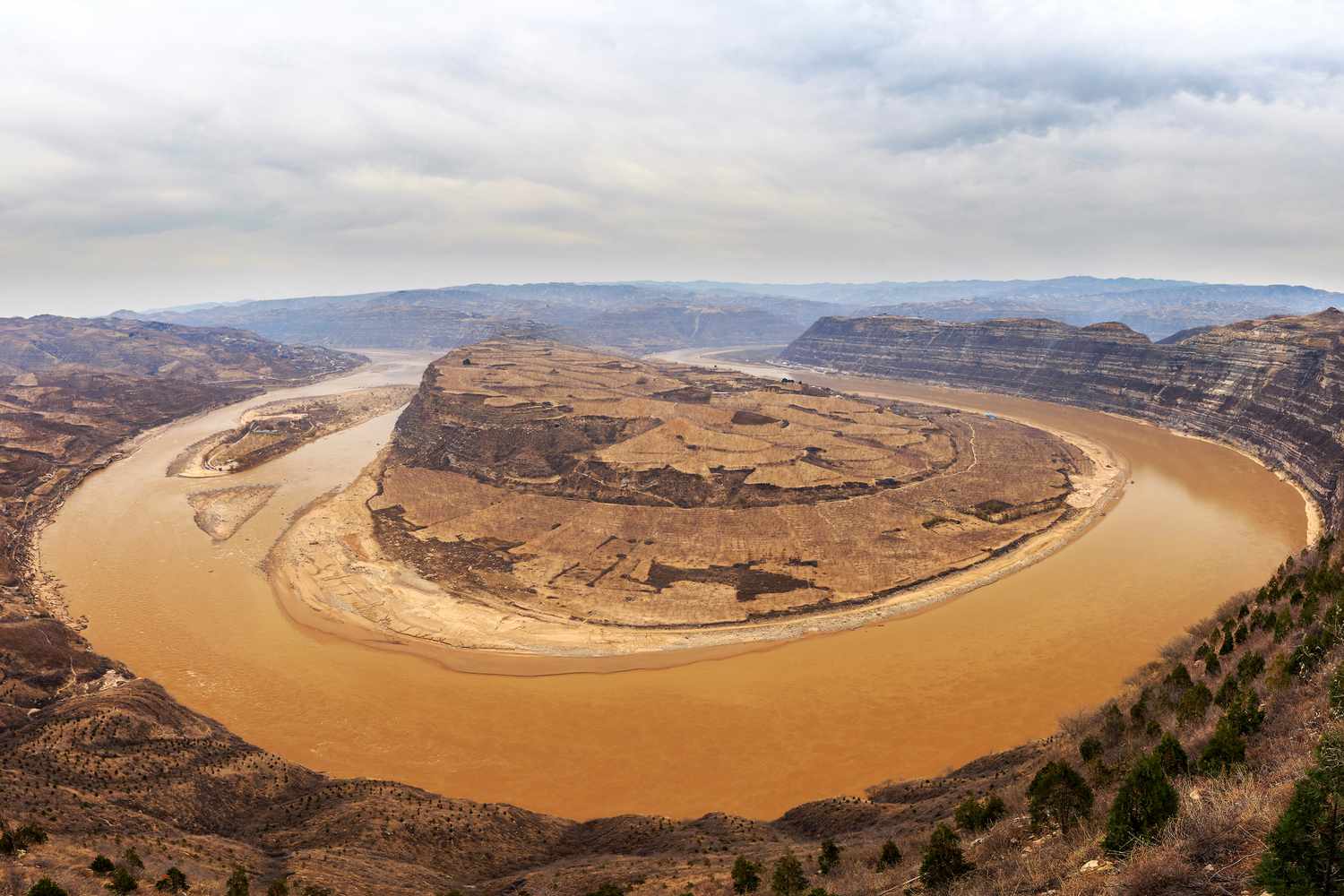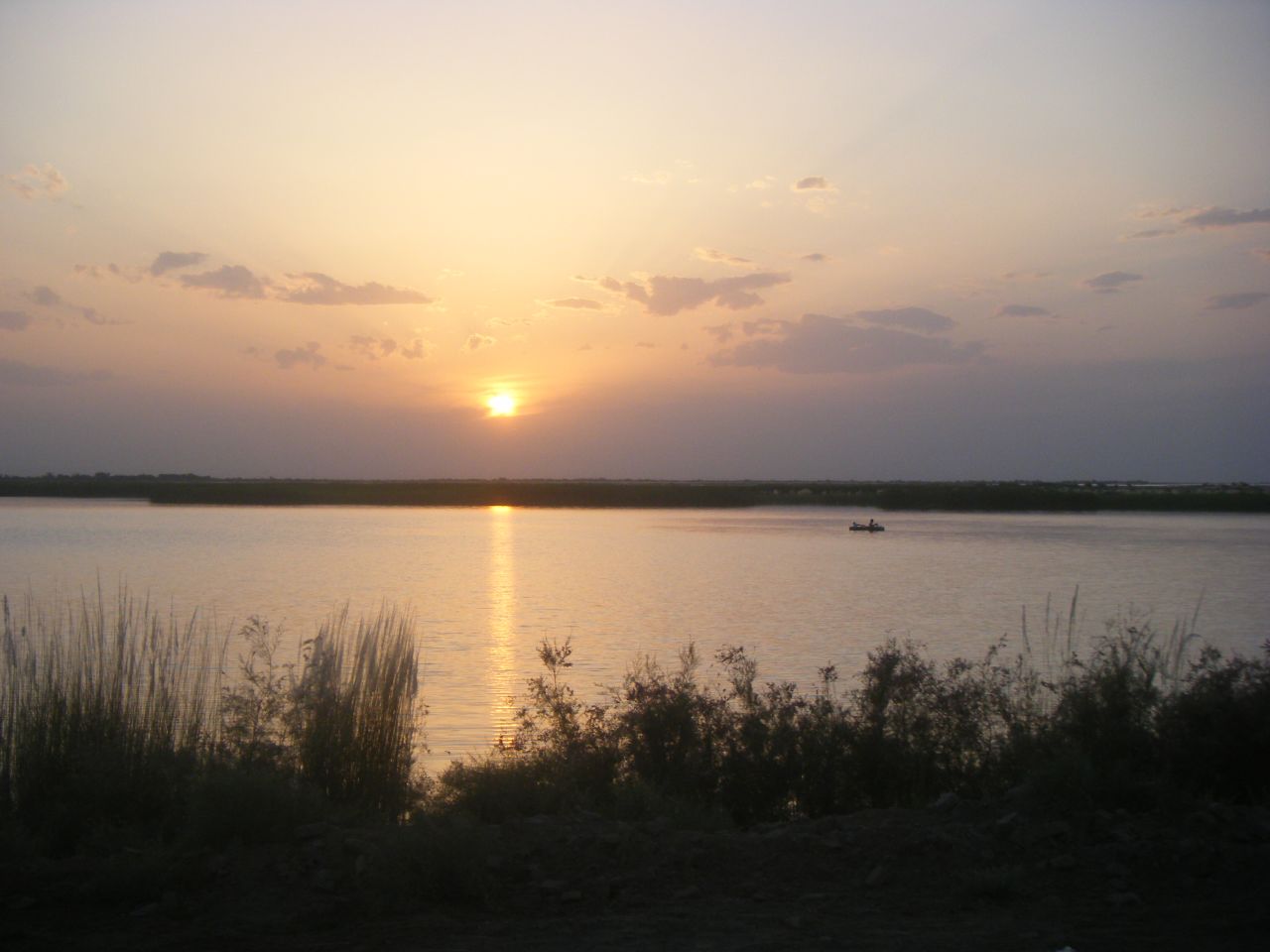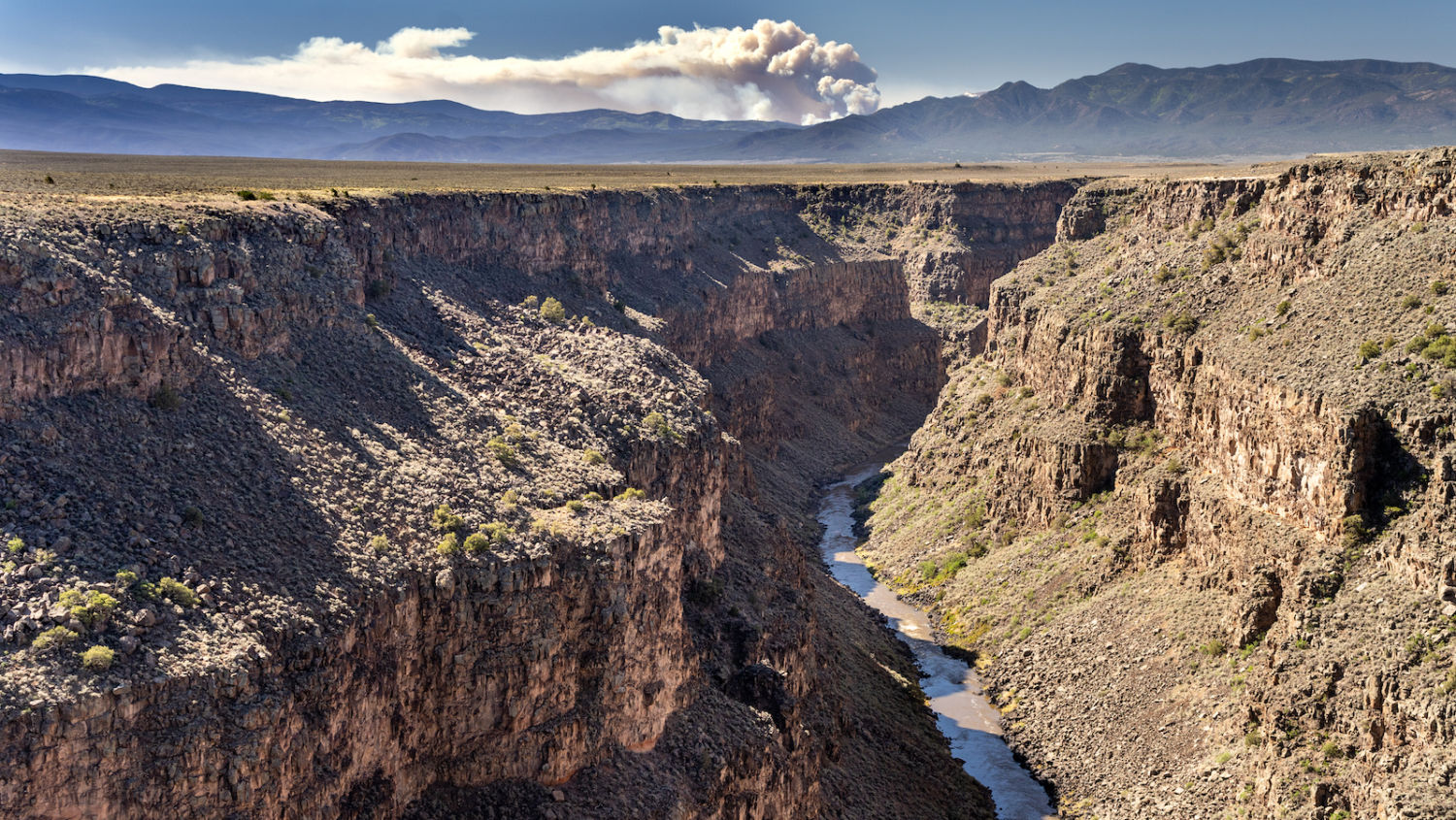Water is a precious resource that sustains life and ecosystems on our planet. However, in the past decade, a concerning issue has emerged: the drying up of rivers worldwide. These once-vital arteries of water, which nourished landscapes, supported diverse ecosystems and provided livelihoods for communities, are now facing a dire fate. The alarming decline in the flow of these rivers raises significant concerns about the availability of water resources and the environmental impacts of human activities.
In this post, we discuss the stories of seven rivers from different corners of the world that are drying up rapidly with devastating effects on ecosystems and human life. We will explore their geographical and historical significance,, and the complex factors that have contributed to their unfortunate demise.
The drying up of these rivers is a wake-up call to the global water crisis we face. Studying the journey of these rivers also provides insights into the urgency of addressing these challenges and the need for sustainable water management practices to secure a water-secure future for generations to come
1 . Colorado River, United States

Source : Water Education Foundation.
The Colorado River, known for shaping the Grand Canyon, is experiencing a significant decrease in water flow. Overuse, climate change, and droughts have led to lower snowpack and groundwater levels, impacting the river’s ability to sustain life and meet water demands of nearby communities. The river’s average flow has dropped by approximately 20% compared to a century ago, while reservoirs like Lake Mead and Lake Powell are operating at historically low levels. Efforts are underway to address the challenges through water conservation, efficient irrigation, and sustainable management strategies.
The Colorado River, flowing approximately 1,450 miles from its headwaters in Colorado to its delta in the Gulf of California, receives contributions from several notable tributaries. The Green River, originating in Wyoming, and the Gunnison River, flowing through Colorado, join forces with the main stem of the Colorado River, ensuring a substantial water supply. The San Juan River, traversing the Four Corners region, and the Little Colorado River, winding through the Grand Canyon, also contribute to the majestic flow of the Colorado River. These tributaries not only enhance the river’s water volume but also add scenic beauty and geological diversity along its course.
2 . Yellow River, China

Source : ThoughtCo
The Yellow River, often called the “cradle of Chinese civilization,” has experienced recurrent drying due to climate change, increased water consumption, and sedimentation. The river’s flow has become irregular, affecting agricultural productivity, biodiversity, and posing challenges to water management strategies.
The drying of the Yellow River, influenced by climate change, increased water consumption, and sedimentation, has led to reduced flow. Human activities like dam construction and irrigation systems contribute to water depletion, while sedimentation further affects the river’s capacity and increases flood risks. This has significant consequences for agriculture, biodiversity, and water management, requiring sustainable practices and strategies to ensure the river’s long-term viability.
The Yellow River, or Huang He, flows for approximately 3,395 miles (5,464 kilometers) through China, making it the country’s second-longest river. It is fed by numerous tributaries that enhance its flow and water supply. One of the main tributaries is the Wei River, which originates in the eastern Tibetan Plateau and joins the Yellow River near the city of Tongguan. The Wei River is renowned for its historical significance and rich agricultural lands along its banks. Other significant tributaries include the Fen River, flowing from the Shanxi province, and the Luo River, which emerges from the Henan province. These tributaries, along with others, contribute to the vast network of the Yellow River, sustaining agriculture, industry, and the livelihoods of millions of people in China.
3 . Murray-Darling River System, Australia

Source : Katherine Times
The Murray-Darling River System, Australia’s longest river network, has faced severe depletion due to prolonged droughts, inefficient water management, and excessive water extraction for irrigation. The drying of this crucial water source has impacted agricultural productivity, aquatic ecosystems, and indigenous communities relying on its waters.
The drying of the Murray-Darling River System, Australia’s longest river network, can be attributed to prolonged droughts, inefficient water management, and excessive water extraction for irrigation. Periods of reduced rainfall and increased evaporation rates have led to decreased river flow and water levels. Inefficient water management practices and excessive water extraction for agricultural purposes have exacerbated the issue. The drying of this vital water source has had significant impacts on agricultural productivity, aquatic ecosystems, and indigenous communities that rely on the river’s water.
The Murray-Darling River System is Australia’s longest river system, extending approximately 2,508 miles (4,028 kilometers) in length. It encompasses both the Murray River and the Darling River, as well as their numerous tributaries. The Murray River, originating in the Australian Alps, receives contributions from several significant tributaries along its journey. One such tributary is the Murrumbidgee River, which joins the Murray River near the town of Balranald. Another important tributary is the Goulburn River, originating in the Victorian Alps and merging with the Murray River near Echuca. The Darling River, which itself is formed by the confluence of the Culgoa and Barwon rivers, receives additional contributions from tributaries like the Warrego River and the Macintyre River. These tributaries collectively make up the intricate network of the Murray-Darling River System, which serves as a crucial water source for agricultural activities and ecosystems across southeastern Australia.
4 . Amu Darya, Central Asia

Source : Wikipedia
The Amu Darya, a major river in Central Asia, has seen reduced water flow primarily due to excessive water diversions for agriculture and hydroelectric projects, compounded by climate change impacts. The drying of this river threatens the livelihoods of communities relying on irrigation, as well as the unique ecosystems it supports.
The drying of the Amu Darya, a significant river in Central Asia, can be attributed to excessive water diversions for agriculture and hydroelectric projects, along with the impacts of climate change. The region heavily relies on the river for irrigation, and the extraction of water for agricultural purposes has exceeded the river’s natural replenishment rate. Additionally, the construction of hydroelectric projects along the river has further reduced its flow. Climate change has exacerbated the situation, leading to changes in precipitation patterns and increased evaporation rates. Rising temperatures and reduced snowmelt from mountainous areas, which serve as the river’s source, have contributed to the drying of the Amu Darya. This decline in water flow poses significant threats to the livelihoods of communities dependent on irrigation, as well as the fragile ecosystems that rely on the river’s water for their survival.
The Amu Darya, located in Central Asia, is one of the region’s major rivers and spans a length of approximately 1,479 miles (2,375 kilometers). It originates in the Pamir Mountains and flows through Tajikistan, Afghanistan, Turkmenistan, and Uzbekistan before emptying into the Aral Sea. The Amu Darya is fed by several tributaries that contribute to its flow and water supply. One notable tributary is the Panj River, which originates in Afghanistan and forms a natural border between Tajikistan and Afghanistan before merging with the Amu Darya. Another significant tributary is the Vakhsh River, which arises in Tajikistan and joins the Amu Darya near the city of Termez. These tributaries, along with others such as the Kyzyl-Suu and Surkhan rivers, are essential for maintaining the Amu Darya’s water volume and supporting agriculture, industry, and ecosystems in the region.
5 . Rio Grande, United States and Mexico

Source : YaleE360
The Rio Grande, serving as a natural border between the United States and Mexico, has faced prolonged periods of low flow and even complete drying in certain stretches. Diminished snowpack, over-extraction for agriculture, and water disputes between the two nations have exacerbated the river’s vulnerability.
The drying of the Rio Grande, which acts as a natural border between the United States and Mexico, can be attributed to multiple factors. One significant factor is diminished snowpack in the mountains that feed the river. Climate change has resulted in reduced snow accumulation, leading to decreased water supply during the river’s crucial melting season. Additionally, over-extraction of water for agricultural purposes has contributed to the river’s diminished flow. Both upstream and downstream users have faced challenges in managing water resources, leading to disputes over water allocation between the United States and Mexico. These disputes further exacerbate the vulnerability of the Rio Grande, as water management decisions impact the river’s flow and availability. The combined impact of these factors has resulted in prolonged periods of low flow and even complete drying in certain stretches of the Rio Grande, posing challenges for ecosystems, agriculture, and water availability in the region.
The Rio Grande, known as Río Bravo del Norte in Mexico, is a vital river that serves as a natural boundary between the United States and Mexico. It stretches approximately 1,900 miles (3,058 kilometers) in length. The Rio Grande is fed by several tributaries that contribute to its flow and water supply. One of the primary tributaries is the Pecos River, which originates in New Mexico and flows through Texas before joining the Rio Grande near the town of Langtry. Another significant tributary is the Rio Conchos, originating in Mexico’s state of Chihuahua and merging with the Rio Grande near the city of Presidio. Additionally, the Rio Grande receives contributions from other smaller tributaries such as the Alamosa and San Juan rivers. These tributaries play a crucial role in sustaining the Rio Grande’s water volume and supporting ecosystems, agriculture, and communities along its course in both the United States and Mexico.
6 . Indus River, Pakistan and India

Source : Bradt Guides
The Indus River, a lifeline for millions in Pakistan and India, has experienced reduced flow due to changing precipitation patterns, glacier retreats, and increased water demands. This has significant implications for agriculture, energy production, and ecosystems dependent on its waters.
The drying of the Indus River, a crucial water source for both Pakistan and India, can be attributed to a combination of factors. Changing precipitation patterns as a result of climate change have led to reduced rainfall in the region, impacting the river’s flow. Glacier retreat in the Himalayas, where the river originates, has further contributed to reduced water availability. The shrinking glaciers, which act as natural reservoirs, are melting at an accelerated pace, affecting the river’s water supply. Additionally, increased water demands for agriculture, industrial use, and energy production have put additional strain on the river’s resources. Excessive water extraction for irrigation, coupled with inefficient water management practices, has further exacerbated the drying of the Indus River. These combined factors have significant implications for agricultural productivity, energy generation, and the delicate ecosystems that depend on the river’s waters.
The Indus River is one of South Asia’s major rivers, flowing through Pakistan and India with a total length of approximately 1,988 miles (3,200 kilometers). It holds immense significance for both countries in terms of water resources and agricultural productivity. The Indus River is fed by several tributaries that contribute to its flow and water supply. The Jhelum River, originating in Indian-administered Kashmir, is a major tributary that joins the Indus near the city of Trimmu in Pakistan. Another significant tributary is the Chenab River, originating in Indian-administered Kashmir as well, which merges with the Indus near the city of Trimmu. The Ravi River, originating in Indian-administered Himachal Pradesh, and the Beas River, originating in Indian-administered Punjab, are also important tributaries that join the Indus River in Pakistani territory. These tributaries collectively sustain the flow of the Indus River and provide water for irrigation, hydroelectric power generation, and the livelihoods of millions of people in Pakistan and India.
7 . São Francisco River, Brazil

Source : Geology Page
The São Francisco River, Brazil’s longest river, has witnessed decreased water levels due to deforestation, pollution, and diversions for irrigation and hydroelectric projects. The drying of this iconic river has severe consequences for the surrounding communities, ecosystems, and cultural heritage.
The drying of the São Francisco River, Brazil’s longest river, can be attributed to multiple factors. Deforestation in the river’s basin has led to soil erosion and reduced water retention, affecting the river’s flow. Pollution from industrial and agricultural activities has also contributed to the deterioration of water quality and aquatic ecosystems. Additionally, extensive water diversions for irrigation and the construction of hydroelectric projects have significantly reduced the river’s water levels. These diversions disrupt the natural flow and reduce the availability of water downstream. The drying of the São Francisco River has severe consequences for the surrounding communities, particularly those relying on the river for agriculture and fishing. It also poses a threat to the diverse ecosystems that depend on the river’s waters, and impacts the cultural heritage tied to the river’s historical significance in Brazil.
The São Francisco River, located in Brazil, is one of the country’s longest and most important rivers, with a length of approximately 1,811 miles (2,914 kilometres). It holds immense significance for the regions it traverses, providing water for irrigation, hydroelectric power, and sustaining diverse ecosystems. The São Francisco River is fed by numerous tributaries that contribute to its flow and water supply. One notable tributary is the Rio das Velhas, originating in the state of Minas Gerais and joining the São Francisco near the city of Pirapora. Another significant tributary is the Rio Grande, which originates in the Serra da Canastra and merges with the São Francisco River near the city of Barra. Additionally, the Jequitinhonha River, originating in Minas Gerais, and the Paraopeba River, originating in the state of São Paulo, also play a role in the São Francisco River’s water volume. These tributaries, along with others, contribute to the ecological balance and socio-economic activities that rely on the São Francisco River’s resources throughout its course in Brazil.
Conclusion
The drying of these seven rivers highlights the global water crisis we face today. Climate change, over-extraction, inefficient water management, and human activities are contributing to the decline of these once-vibrant water bodies. Urgent action is needed to address these challenges through sustainable water management, conservation efforts, and international cooperation. Protecting and restoring these rivers is not only essential for maintaining ecological balance but also for ensuring the well-being and survival of communities that depend on them

